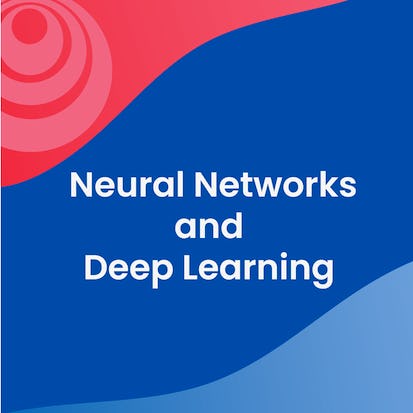- Level Professional
- المدة 20 ساعات hours
- الطبع بواسطة DeepLearning.AI
-
Offered by

عن
AI is transforming the practice of medicine. It's helping doctors diagnose patients more accurately, make predictions about patients' future health, and recommend better treatments. As an AI practitioner, you have the opportunity to join in this transformation of modern medicine. If you're already familiar with some of the math and coding behind AI algorithms, and are eager to develop your skills further to tackle challenges in the healthcare industry, then this specialization is for you. No prior medical expertise is required! This program will give you practical experience in applying cutting-edge machine learning techniques to concrete problems in modern medicine: - In Course 1, you will create convolutional neural network image classification and segmentation models to make diagnoses of lung and brain disorders. - In Course 2, you will build risk models and survival estimators for heart disease using statistical methods and a random forest predictor to determine patient prognosis. - In Course 3, you will build a treatment effect predictor, apply model interpretation techniques and use natural language processing to extract information from radiology reports. These courses go beyond the foundations of deep learning to give you insight into the nuances of applying AI to medical use cases. As a learner, you will be set up for success in this program if you are already comfortable with some of the math and coding behind AI algorithms. You don't need to be an AI expert, but a working knowledge of deep neural networks, particularly convolutional networks, and proficiency in Python programming at an intermediate level will be essential. If you are relatively new to machine learning or neural networks, we recommend that you first take the Deep Learning Specialization, offered by deeplearning.ai and taught by Andrew Ng. The demand for AI practitioners with the skills and knowledge to tackle the biggest issues in modern medicine is growing exponentially. Join us in this specialization and begin your journey toward building the future of healthcare.الوحدات
Welcome to the AI for Medicine Specialization
1
External Tool
- Intake Survey
3
Videos
- Welcome to the Specialization with Andrew and Pranav
- Demo
- Recommended Pre-requisites
1
Readings
- [IMPORTANT] Have questions, issues or ideas? Join our Forum!
Applications of Computer Vision to Medical Diagnosis
1
Labs
- Data Exploration & Image Pre-Processing
2
Videos
- Medical Image Diagnosis
- Eye Disease and Cancer Diagnosis
Handling Class Imbalance and Small Training Sets
2
Labs
- Counting Labels and Weighted Loss Function
- Densenet
10
Videos
- Building and Training a Model for Medical Diagnosis
- Training, Prediction, and Loss
- Image Classification and Class Imbalance
- Binary Cross Entropy Loss Function
- Impact of Class Imbalance on Loss Calculation
- Resampling to Achieve Balanced Classes
- Multi-Task
- Multi-task Loss, Dataset size, and CNN Architectures
- Working with a Small Training Set
- Generating More Samples
Checking your Model Performance
1
Labs
- Patient Overlap & Data Leakage
5
Videos
- Model Testing
- Splitting Data by Patient
- Sampling
- Ground Truth and Consensus Voting
- Additional Medical Testing
Quiz
1
Assignment
- Disease Detection with Computer Vision
Programming Assignment: Chest X-Ray Medical Diagnosis with Deep Learning
- Chest X-Ray Medical Diagnosis with Deep Learning
2
Readings
- (Optional) Downloading your Notebook, Downloading your Workspace and Refreshing your Workspace
- About the AutoGrader
Key Evaluation Metrics
5
Videos
- Sensitivity, Specificity and Evaluation Metrics
- Accuracy in Terms of Conditional Probability
- Sensitivity, Specificity and Prevalence
- PPV, NPV
- Confusion Matrix
1
Readings
- Calculating PPV in Terms of Sensitivity, Specificity and Prevalence
Threshold and Evaluation Metrics
1
Labs
- ROC Curve and Threshold
2
Videos
- ROC Curve and Threshold
- Varying the Threshold
Interpreting Confidence Intervals Correctly
3
Videos
- Sampling from the Total Population
- Confidence Intervals
- 95% Confidence Interval
Quiz
1
Assignment
- Evaluating Machine Learning Models
Programming Assignment: Evaluation of Diagnostic Models
- Evaluation of Diagnostic Models
Exploring MRI Data
1
Labs
- Explore MRI Data & Labels
1
Videos
- Medical Image Segmentation
Image Segmentation
2
Labs
- Extract a Sub Section
- U-Net Model
5
Videos
- MRI Data and Image Registration
- Segmentation
- 2D U-Net and 3D U-Net
- Data Augmentation for Segmentation
- Loss Function for Image Segmentation
2
Readings
- Convolutional Neural networks
- More about U-Net (Optional)
Practical Considerations
3
Videos
- Different Populations and Diagnostic Technology
- External Validation
- Measuring Patient Outcomes
Quiz
1
Assignment
- Segmentation on Medical mages
End of access to Lab Notebooks
1
Readings
- [IMPORTANT] Reminder about end of access to Lab Notebooks
Programming Assignment: Brain Tumor Auto-Segmentation for Magnetic Resonance Imaging (MRI)
- Brain Tumor Auto-Segmentation for Magnetic Resonance Imaging (MRI)
Summary of AI for Medical Diagnosis
1
Videos
- Congratulations!
2
Readings
- Acknowledgements
- Citations
Auto Summary
"AI for Medical Diagnosis" is a specialized course designed for AI practitioners eager to apply machine learning techniques to healthcare. Led by Coursera, the program spans 1200 hours and is tailored for professionals with a solid foundation in AI algorithms and Python programming. Across three courses, learners will develop skills in convolutional neural networks, risk models, survival estimators, and natural language processing, focusing on diagnosing and predicting medical conditions. Subscription options include Starter, Professional, and Paid plans. No prior medical expertise is required, making it ideal for those looking to innovate in the healthcare industry.

Pranav Rajpurkar

Bora Uyumazturk

Amirhossein Kiani


